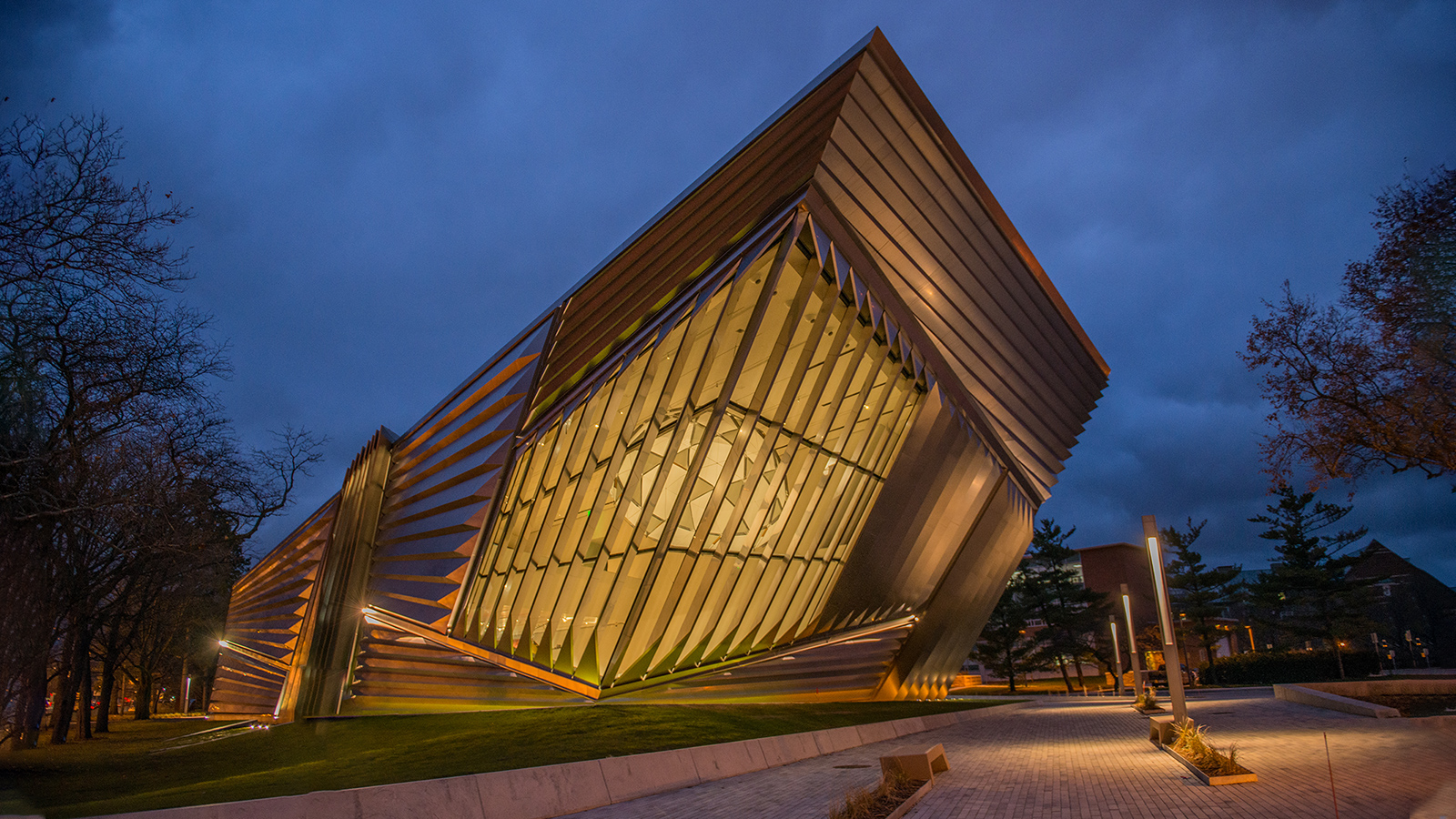Graduate Studies
We offer Master of Fine Arts degrees in:
Ceramics, Graphic Design, Painting, Printmaking, and Sculpture
The Master of Fine Art degree program is a three-year program that culminates in a thesis exhibition in the Eli and Edythe Broad Art Museum.
MFA Program Mission
The MFA program seeks highly motivated students who have the artistic and scholarly vision to guide us into equitable, sustainable, and creative futures. We encourage new and rigorous forms of artistic expression and design innovation that transcend typical constraints to make meaningful contributions to the world.
The MSU MFA program provides students an opportunity to focus within or across disciplines and a forum to push beyond the boundaries of existing art and design paradigms. We do so by offering:
- A fully funded graduate education to all MFA students, covering the entire three-year program;
- Teaching opportunities beginning in your second semester
- Generous Research, Summer, and Dissertation Completion Fellowships
- A customizable, integrated and multidisciplinary program at a Research 1 (R1)University, with world-class faculty specializing in the arts, humanities, science, technology, education, agriculture, medicine, and engineering
- A culminating thesis exhibition at the Eli and Edythe Broad Art Museum.
The Land Grant MFA, Reimagined
The Department of Art, Art History, and Design encourages our MFA students to deepen our understanding of the human condition through work that intersects productively with ideas of culture, identity, technology, and science. MSU is the pioneer Land Grant institution and, as such, has as its express mandate “to democratize higher education and expand its opportunities based on merit, not social class.”
Our MFA program seeks to expand our empathic understanding, cultivate the voices of underserved populations and ideas, and mitigate and critique damage done to ecologies, marginalized cultures, and the environment brought about by several centuries of colonialist pursuits. Together, we ask how art and design can work with, through, or even against constraints like media, culture, science, technology, capitalism, and society to create sustainable futures built on strong communities that value and maximize the potential of every individual.
The MFA program helps students to acquire the tools to develop an art and research practice that is at once specific and broadly informed. That could mean incorporating new ideas into an established discipline, such as ceramics or painting, with the result being new approaches to making. Or, it could involve striking new relationships between disciplines and forms of expertise, finding a liminal, “in-between” space of established research and practice. The curriculum encourages students to explore the university and to be open to new possibilities, ideas, making and research.
The MSU MFA program values and understands diversity. Diversity includes race, ethnicity, gender, age, socio-economic status, religion and politics but also extends to include aesthetic orientation, educational background, job experience, and technical skills. The MFA program seeks students with vision and the potential for excellence, in whatever form that might take.
World-Class Faculty
The program draws from the unique expertise of faculty and technical staff from within the Department of Art, Art History and Design (AAHD) and combines it with that of other world-class faculty from programs across the campus. We are home to more than fifty faculty and staff members, including thirty tenure-system faculty. AAHD faculty have particular strengths in design practice and theory, abstract, experimental, and figurative painting, print media, installation, sculpture, ceramics and materials studies, photography, art and science, digital fabrication and intermedia, apparel and textile design, art criticism, history, and visual culture studies, performative exhibition practices, social practice and activism.
Many faculty participate in interdisciplinary initiatives in and beyond the College of Arts and Letters, such as the Center for Interdisciplinarity in the Arts and Humanities; Experience Architecture; Digital Humanities; Arts and Cultural Management and Museum Studies; Film Studies; Women’s and Gender Studies; American Indian and Indigenous Studies; Asian Studies, African and African American Studies, Global Studies and MSU Archives has one of the best comic book collections in the world.
Vibrant Spaces for Art
Additionally, the Department of Art, Art History, and Design has a strong relationship with the new Zaha Hadid-designed Eli and Edythe Broad Art Museum, one of only a few contemporary art museums to reside on a university campus. All MFA students have the opportunity to exhibit in the museum as a part of their thesis requirement and can apply for museum employment. In addition, there are several departmental galleries on and off campus for which student assistantships are available.


Vibrant Spaces for Art
Additionally, the Department of Art, Art History, and Design has a strong relationship with the new Zaha Hadid-designed Eli and Edythe Broad Art Museum, one of only a few contemporary art museums to reside on a university campus. All MFA students have the opportunity to exhibit in the museum as a part of their thesis requirement and can apply for museum employment. In addition, there are several departmental galleries on and off campus for which student assistantships are available.
Visiting Artists, Designers, and Scholars
The department is home to a distinguished lecture series and two artist-in-residence programs: the Visiting Artist & Scholar Lecture Series; the Bridge Artist-in-Residence Program, which brings a group of internationally renowned artists, designers, critics, and scholars to campus each year to explore new artistic forms and transmedia projects; and the Artist/Designer-in-Residence in Critical Race Studies, which is designed to empower cultural transformation through a shared engagement with creative artistic practices.
Admissions
Admission decisions are made by the Department of Art, Art History, and Design. However, your admission to the University is not official until it has been approved by the Office of Admissions. Therefore, you must apply to the university. The Office of Admissions will send out official offer letters. Admission decisions are made after a departmental review of your academic records, test scores (where required), recommendations, qualifications and experience, and proposed program of study.